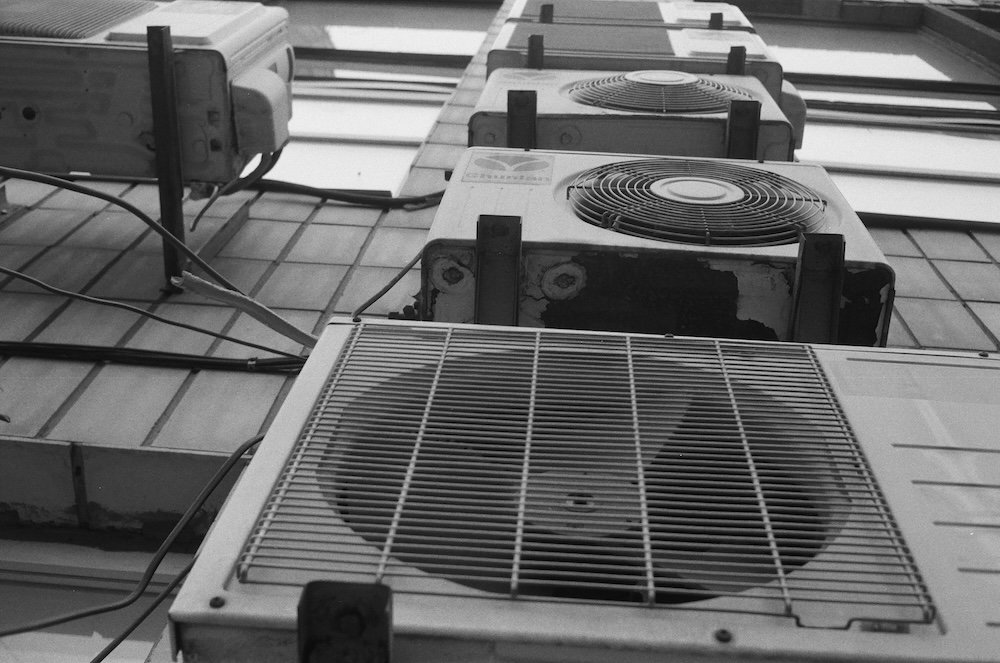Humidity is one of the most influential environmental factors shaping the efficiency and expense of cooling systems. While temperature often dominates discussions about energy consumption, the amount of moisture in the air can drastically alter how hard cooling systems must work.
This is particularly evident when comparing coastal and inland regions, where varying humidity levels create different demands on cooling infrastructure. For households in areas such as North Shore and beyond, understanding these dynamics provides deeper insight into why energy bills rise in one area while remaining relatively stable in another.

Photo by Illia Horokhovsky on Unsplash
The Role of Air Conditioners in Humid Environments
Air conditioners are designed to do more than lower the air temperature; they also remove moisture from the indoor environment. In coastal areas, the air is often saturated with humidity, meaning cooling systems must expend additional energy to dehumidify the air before cooling it effectively.
This double function can place considerable strain on units, leading to higher utility costs. To avoid inefficiencies, homeowners are often encouraged to get in touch with One Hour Air Conditioning & Heating of North Shore to conduct an assessment. Such evaluations help determine whether a system is adequately equipped to handle both cooling and dehumidifying without excessive energy waste.
Humidity’s Impact on Cooling Efficiency
Moisture in the air changes how bodies perceive temperature. High humidity levels make the air feel warmer than it actually is because the body’s natural cooling mechanism—sweat evaporation—becomes less effective. This effect, known as the heat index, increases the demand for cooler indoor environments. Coastal homes often keep thermostats set lower to achieve comfort, forcing air conditioning systems to operate longer and at higher capacities.
Inland regions, on the other hand, may experience drier heat, especially during peak summer months. While temperatures can soar, the lack of significant moisture means systems primarily focus on lowering temperature rather than managing humidity.
Energy Demands in Coastal Settings
The constant battle against humidity in coastal areas means air conditioners often run nearly continuously during hot months. Compressors, fans, and dehumidification components are placed under constant stress, increasing both energy consumption and maintenance needs. Filters clog faster as they capture excess moisture and airborne particles, coils collect condensation that requires drainage, and systems must cycle longer to meet comfort expectations.
Additionally, moisture-laden air can infiltrate poorly sealed homes, undoing much of the work cooling systems perform. This leads to energy waste as units compensate for the constant reintroduction of humid air.
Inland Cooling and Temperature Extremes
Inland regions are not immune to high energy costs, but the reasons differ. Inland climates often feature greater temperature fluctuations between day and night. While daytime highs can be extreme, nighttime cooling tends to offer relief, reducing overall demand. This cyclical pattern allows systems to rest more frequently compared to the constant workload required in coastal areas.
However, inland households may compensate by installing larger cooling units designed to handle extreme daytime heat. Oversized systems can lead to energy inefficiencies if they cool too quickly without running long enough to distribute air evenly.
The Cost of Comfort and Lifestyle Differences
Lifestyle choices between coastal and inland residents also influence energy costs. In coastal environments, people may prefer running air conditioners almost constantly to maintain both cool and dry air. This lifestyle is shaped by the discomfort of sticky, humid conditions that make daily life unpleasant indoors without consistent cooling.
Inland residents often tolerate higher daytime temperatures, relying on strategic cooling during the hottest hours while using ventilation or evaporative cooling in the evenings. This flexibility reduces total energy consumption, even when daytime temperatures exceed those of coastal areas.
Maintenance and System Longevity
Energy costs are not the only factor influenced by humidity. The longevity of cooling systems also varies depending on environmental conditions. Coastal air conditioners face greater wear because of continuous dehumidification loads. Moisture promotes corrosion in metal components, accelerates the deterioration of seals, and fosters mold growth in ducts and drains. Each of these problems not only adds to maintenance costs but also reduces efficiency, further increasing energy bills over time.
Inland systems, while stressed by high temperatures, often have longer lifespans if well-maintained. With less moisture to battle, corrosion and mold issues are minimized. Filters and coils may also remain cleaner for longer periods, reducing maintenance frequency.
Advances in Cooling Technology
Modern advancements in cooling technology are helping address the challenges posed by humidity. Systems now include variable-speed compressors that adjust output based on real-time demand, ensuring more efficient operation. Dedicated dehumidifiers integrated into HVAC systems can offload the moisture-removal burden, allowing the air conditioner to focus on temperature regulation. Coastal homeowners investing in these technologies often find significant reductions in energy bills because their systems no longer waste energy performing dual tasks inefficiently.
For inland homes, smart thermostats and zoning systems provide targeted cooling, preventing waste in unoccupied rooms.
Economic and Environmental Implications
The financial impact of coastal versus inland cooling extends beyond individual households. Utilities in coastal regions face higher peak demands due to widespread and constant air conditioning use. This increased load drives up infrastructure costs and can lead to rolling blackouts during extreme weather events. Inland regions, with their cyclical patterns of demand, typically present a lower strain on power grids, even when temperatures peak.
From an environmental standpoint, energy-intensive cooling in humid regions contributes disproportionately to greenhouse gas emissions. This underscores the importance of designing efficient systems tailored to climate conditions, ensuring energy resources are not wasted unnecessarily.
Long-Term Strategies for Energy Management
Addressing the energy costs of humidity requires both technological solutions and behavioral adjustments. Homeowners can improve insulation, seal leaks, and install advanced cooling systems that manage humidity more effectively. Regular maintenance ensures systems run at peak efficiency, reducing wasted energy.
In coastal settings, strategies should emphasize moisture control through proper ventilation, integrated dehumidification, and upgraded insulation. Inland households benefit from optimizing system sizing, leveraging smart thermostats, and taking advantage of cooler nighttime temperatures.
Humidity is often the hidden factor behind high cooling costs, creating stark contrasts between coastal and inland energy use. Coastal systems expend tremendous energy combating moisture, while inland systems primarily address temperature swings. These differences not only affect monthly bills but also influence system longevity, maintenance, and environmental impact.
Disclosure: She Owns It partners with others through contributor posts, affiliate links, and sponsored content. We are compensated for sponsored content. The views and opinions expressed reflect those of our guest contributor or sponsor. We have evaluated the links and content to the best of our ability at this time to make sure they meet our guidelines. As links and information evolve, we ask that readers do their due diligence, research, and consult with professionals as needed. If you have questions or concerns about any content published on our site, please let us know. We strive to only publish ethical content that supports our community. Thank you for supporting the brands that support this blog.



















Leave a Reply